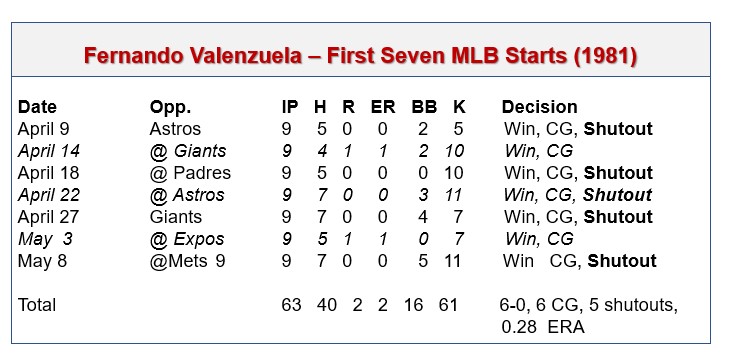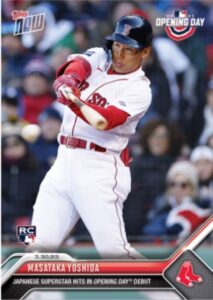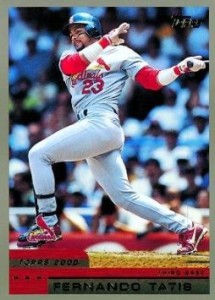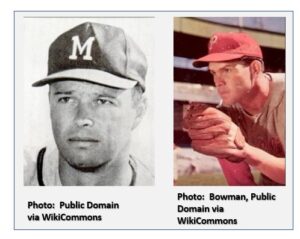
Photo: Tony Barnard, Los Angeles Times, CC BY 4.0 <https://creativecommons.org/licenses/by/4.0>, via Wikimedia Commons
On this date (April 27) in 1981, a 20-year-old rookie southpaw for the Dodgers named Fernando Valenzuela threw his third consecutive shutout (and fourth in five starts), as his Dodgers topped the Giants 5-0 in LA before a raucous crowd of 49,478.
With that event in mind, I’d like to use this post to allow “geezers” like me to look back with nostalgia on the phenomenon that was Fernandomania and to let a new generation of fans get a better idea of the “wonder” that was Fernando Valenzuela’s screwball.
Fernando Valenzuela is the only MLB player to win Rookie of the Year and the Cy Young Award in the same season.
In July of 1979, Valenzuela, then 18-years-old, was purchased by the Dodgers from the Yucatan Leones of the Mexican League. Early on, teammate Bobby Castillo taught the youngster (who did not have an overpowering fastball) how to throw a screwball. It was a stroke of good fortune for Valenzuela and the Dodgers. Valenzuela quickly perfected the pitch and took it to new heights. That screwball, in fact, would earn Valenzuela a call up to the Dodgers by September of 1980. As the 1980 MLB season closed out, Valenzuela made ten relief appearances for the Dodgers – pitching 17 2/3 innings without giving up an earned run (walking five and fanning 16).
In 1981, as a 20-year-old with his rookie status still intact, Valenzuela not only made the season-opening Dodgers’ roster, but when the slated Opening Day starting pitcher Jerry Reuss suffered an injury warming up, manager Tommy Lasorda chose Valenzuela to start the opener. He didn’t disappoint. In his first MLB start, the Dodger rookie pitched a complete-game shutout (topping the Astros 2-0), with five hits, two walks and five strikeouts – and thus the foundation of Fernandomania was born.
Over his first five MLB starts, using his devastating screwball and unorthodox lineup, the likable youngster pitched five complete games, four of them shutouts, while walking 11 and fanning 43 in 45 innings. In his only non-shutout, Valenzuela gave up one run on four hits and two walks, while fanning ten. After five games, the 20-year-old was 5-0, with a 0.20 ERA and 43 whiffs in 45 innings. In the process, Valenzuela captured not only the hearts and passion of the California Latino community, but the attention of fans across baseball.
At home, Valenzuela’s 1981 starts drew 48,431 fans, as compared to 40,912 for games he didn’t start – an 18 percent increase. Valenzuela’s road starts drew an average of 33,273 fans, while Dodger road games he did not start drew 19,456. I’ll do the math again. That’s a 71 percent jump.
Eleven of Valenzuela’s 12 Dodger Stadium 1981 starts were sellouts.
Valenzuela brokered his devastating screwball into a 13-7, 2.48 record (in a strike-shortened 100-game season), finishing second in the NL in wins (13), first in innings pitched (192 1/3); first in strikeouts (180); first in games started (25); first in complete games (11); and first in shutouts (eight). Valenzuela also won a Silver Slugger Award in 1981 (hitting .250 over 64 at bats).
Not only did the 20-year-old rookie make the 1981 NL All Star team, he was chosen to start the game. Then he topped off the season by winning not only the NL Rookie of the Year Award, but also the league’s Cy Young Award. He helped lead the Dodgers to the World Series and won Game Three, as the Dodger stopped the Yankees four games-to-two.
 From 1981 through 1987, Valenzuela went 111-82, 3.11 for the Dodgers in the regular season and 5-1, 2.00 in the post season, His career marks (1980-91, 1993-97 … Dodgers, Angels, Orioles, Phillies, Padres, Cardinals) were: 173-153, 3.54 in the regular season and 5-1, 1.98 in the post season.
From 1981 through 1987, Valenzuela went 111-82, 3.11 for the Dodgers in the regular season and 5-1, 2.00 in the post season, His career marks (1980-91, 1993-97 … Dodgers, Angels, Orioles, Phillies, Padres, Cardinals) were: 173-153, 3.54 in the regular season and 5-1, 1.98 in the post season.
A few other Valenzuela tidbits:
- On June 29, 1990, Valenzuela threw a no-hitter, as the Dodgers topped the Cardinals 6-0 in LA;
- He won two Silver Slugger Awards and one Gold Glove.
- He was a career .200 hitter, with ten home runs and 84 RBI in 936 at bats.
- In 1990, he hit .304-1-11 in 69 at bats.
- In 19 place appearances as a pinch hitter, Valenzuela hit .368.
- He led the NL in wins once (21 in 1986).
- He also led the league in complete games three times, and shutouts, innings pitched and strikeouts once each.
- He was a six time All Star – consecutive years 1981-1986.
In the 1986 All Star Game, Fernando Valenzuela tied the record (set by Carl Hubbell) for consecutive strikeouts with five. Valenzuela’s victims were: Don Mattingly; Cal Ripken, Jr.; Jesse Barfield; Lou Whitaker; and Teddy Higuera.
Primary Resources: Baseball-Reference.com; Baseball-Almanac.com; How Fernando Drew Thousands of Extra Fans, by Mike Petriello, MLB.com, August 15, 2012; When 20-year-old Rookie Fernando Valenzuela Captivated LA and Major League Baseball, by Phil Sheridan, History Channel, September 8, 2021.
Baseball Roundtable – Blogging Baseball Since 2012.

 Baseball Roundtable is on the Feedspot list of the Top 100 Baseball Blogs. To see the full list, click here.
Baseball Roundtable is on the Feedspot list of the Top 100 Baseball Blogs. To see the full list, click here.
Baseball Roundtable is also on the Anytime Baseball Supply Top 66 Baseball Sites list. For the full list, click here.
I tweet (on X) baseball @DavidBaseballRT
Follow Baseball Roundtable’s Facebook Page here. More baseball commentary; blog post notifications; PRIZES.
Member: Society for American Baseball Research (SABR); Negro Leagues Baseball Museum; The Baseball Reliquary.



































































































